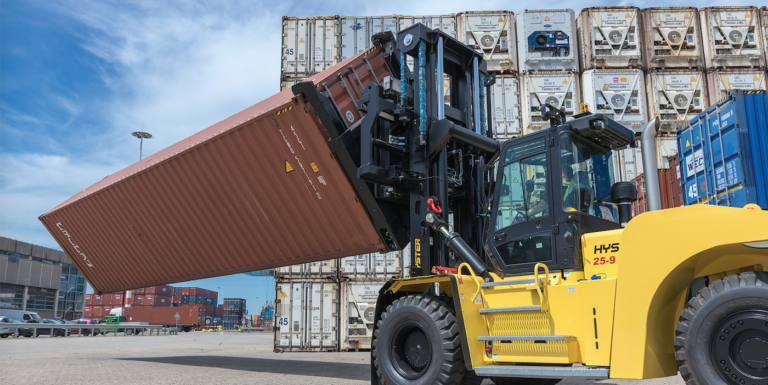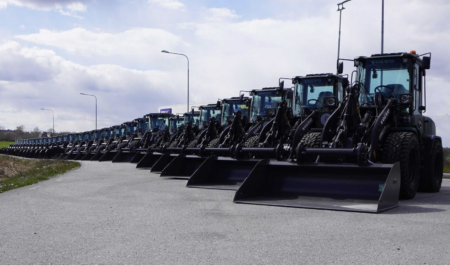In order to improve efficiency in the time-pressured shipping container handling sector, Hyster Europe has introduced a spreader support device option for its empty container handlers, designed to accelerate the inspection process of such containers.
“To help them remain competitive in container inspection, maintenance and repair operations, the visual inspection of empty containers needs to be as efficient as possible,” explained Chris van de Werdt, product strategy manager, EMEA Big Trucks for Hyster Europe.
The key element of the spreader support device is that it helps eliminate a stage in the inspection process, as empty containers will not need to be set down for inspection. Instead, the spreader holding the container is firmly locked in place at a height of about 1.80m. At the touch of a button in the cab, the operator can activate the support device, which secures the spreader with mechanical locks from both sides of the mast, preventing the spreader and container from dropping. As an added safety feature, the moment the spreader support device is extended, the operator cannot drive or move the truck until it is de-activated following the inspection.
“The inspection process involves examining the container for damage, including the underside, and the process has health and safety risks if the container is not suitably held in position,” added van de Werdt.
“A monitor indicates to the checker that the spreader is fixed and the container stabilised. Whether it is a dry container or the inspection of a reefer for food transportation or pharmaceuticals, this device helps significantly reduce the inspection time.”
The spreader support device is available on models from the Hyster H8XM-EC6 – H11XM-ECD9 series of empty container handlers for the inspection of 20, 40 and 45ft sea containers.
Moving containers into the workshop on the short end
Hyster is also offering a lift truck with an attachment that can move a 40ft container into a workshop with narrow doors, and then rotate it.
“When engineers need to repair the roof or the bottom of a container, they normally have to work on top or underneath it. However, this attachment can rotate the container, allowing them to work on these areas as if they were the side of the container, which is far more easily accessed,” said van de Werdt. “This makes repairs and maintenance easier and more efficient, helping to increase productivity and contributing to overall safety.”





